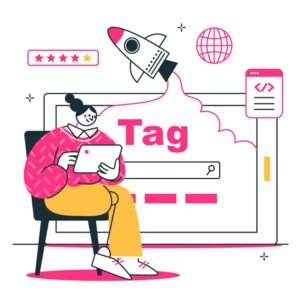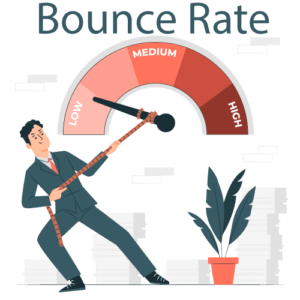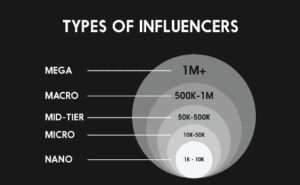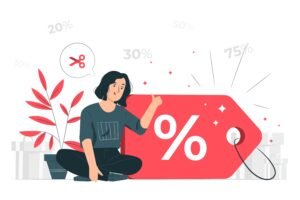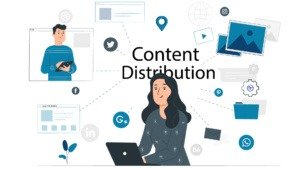
Encouraging customers to make a purchase is an art that combines understanding consumer psychology, offering value, and employing effective strategies. In today’s digital age, where options are abundant and consumer attention spans are short, businesses need to be innovative and strategic to stand out. This article explores ten comprehensive tips to entice and encourage customers to buy.
1. Compelling Product Descriptions
Crafting detailed and persuasive product descriptions is crucial. A well-written product description does more than list features; it highlights the benefits and addresses potential customer pain points. It should answer the essential questions customers might have about the product and convey the unique selling proposition. Use engaging and relatable language that resonates with your target audience. For example, instead of simply stating that a jacket is warm, describe it as “perfect for keeping you cozy on chilly winter mornings.”
Key elements of a compelling product description include:
- Clear, concise language: Avoid jargon and complex terms.
- Highlighting benefits: Focus on what the product does for the customer.
- Using sensory words: Help customers imagine using the product.
- Including a call to action: Encourage immediate purchase decisions.
2. High-Quality Visuals
Humans are visual creatures, and high-quality images and videos can significantly influence buying decisions. Provide multiple images from different angles, include zoom options, and create videos that show the product in use. This approach gives customers a comprehensive understanding of what they are considering purchasing, helping to bridge the gap between online and in-store experiences.
Best practices for product visuals:
- High-resolution images: Ensure clarity and detail.
- Contextual images: Show the product in real-life scenarios.
- Videos: Demonstrate how the product works and highlight key features.
- Consistency: Maintain a uniform style and background for all product images.
3. Social Proof
Customer reviews, ratings, and testimonials play a crucial role in building trust and credibility. Positive feedback from other buyers can alleviate doubts and provide social proof of your product’s quality and authenticity. Display these reviews prominently on your product pages.
Strategies to leverage social proof:
- Encourage reviews: Ask satisfied customers to leave feedback.
- Showcase testimonials: Highlight positive experiences and endorsements.
- Use influencer endorsements: Collaborate with influencers to reach a broader audience.
- Display user-generated content: Share photos and videos from customers using your products.
4. Limited-Time Offers
Urgency can drive immediate action. Create limited-time offers, flash sales, or countdown timers to create a sense of urgency among customers. Highlight the savings or exclusive benefits they’ll receive by acting quickly. This strategy taps into the fear of missing out (FOMO), which can be a powerful motivator.
Tips for effective limited-time offers:
- Clear deadlines: Specify the end date and time of the offer.
- Visible countdowns: Use timers to show remaining time.
- Exclusive deals: Offer unique discounts not available at other times.
- Reminders: Send email or SMS reminders about the expiring offer.
5. Clear Return Policy
A transparent and hassle-free return policy can eliminate fears or doubts. Customers need assurance that they can return or exchange a product if it doesn’t meet their expectations. Clearly outline the return process, conditions, and any associated costs.
Components of a good return policy:
- Easy-to-understand terms: Use straightforward language.
- Reasonable timeframe: Offer a sufficient period for returns.
- No hidden fees: Be upfront about any potential costs.
- Accessible support: Provide contact information for assistance.
6. Personalization
Tailor your offers and recommendations based on customer behavior and preferences. Use data-driven insights to provide personalized suggestions that align with their interests. Personalized experiences can significantly increase engagement and conversion rates.
Ways to implement personalization:
- Behavioral data: Track browsing and purchase history.
- Segmented emails: Send targeted offers based on customer segments.
- Personalized recommendations: Use algorithms to suggest relevant products.
- Customized landing pages: Create unique experiences for different user groups.
7. Bundle Deals
Offering bundle deals or packages can entice customers to buy more. Presenting a value-driven package that includes related products can encourage customers to explore additional options and perceive greater value.
Effective bundling strategies:
- Complementary products: Bundle items that are often used together.
- Discounted bundles: Offer a lower price for the bundle than individual items.
- Tiered bundles: Provide options at different price points.
- Clear value proposition: Highlight the savings and benefits of the bundle.
8. Free Shipping
High shipping costs can be a significant deterrent. Consider offering free shipping, especially for larger orders or as part of a promotion. Free shipping can be a powerful incentive for customers to complete their purchases.
Approaches to offer free shipping:
- Minimum purchase threshold: Offer free shipping on orders above a certain amount.
- Promotional periods: Provide free shipping during special events or holidays.
- Membership programs: Include free shipping as a perk for loyalty program members.
- Clear communication: Display free shipping offers prominently on your site.
9. Loyalty Programs
Reward repeat customers with loyalty programs that offer exclusive discounts, early access to sales, or points for every purchase. This not only encourages initial purchases but also fosters long-term relationships and repeat business.
Elements of a successful loyalty program:
- Easy enrollment: Simplify the sign-up process.
- Valuable rewards: Offer attractive and attainable rewards.
- Regular updates: Keep customers informed about their points and rewards.
- Exclusive perks: Provide benefits that are not available to non-members.
10. Live Chat Support
Offering real-time assistance through live chat can address customers’ last-minute questions or concerns. Providing immediate support boosts their confidence and increases the likelihood of purchase.
Best practices for live chat support:
- Quick response times: Ensure agents are available and responsive.
- Proactive chat invitations: Offer help proactively based on user behavior.
- Knowledgeable agents: Train staff to answer questions effectively.
- Personal touch: Use the customer’s name and personalize the interaction.
Conclusion
Encouraging customers to make a purchase requires a multifaceted approach that combines psychological triggers, excellent customer service, and tailored strategies. By implementing these ten tips, businesses can drive more conversions and create positive buying experiences that lead to loyal customers and repeat business. Understanding your audience and providing value that resonates with their needs and desires is key. When customers feel understood, valued, and assured of their choices, they are more likely to convert and remain loyal to your brand.
Remember, each customer interaction is an opportunity to build trust and enhance the overall customer experience. Prioritize transparency, personalization, and quality to create a lasting impact and encourage more sales.

















